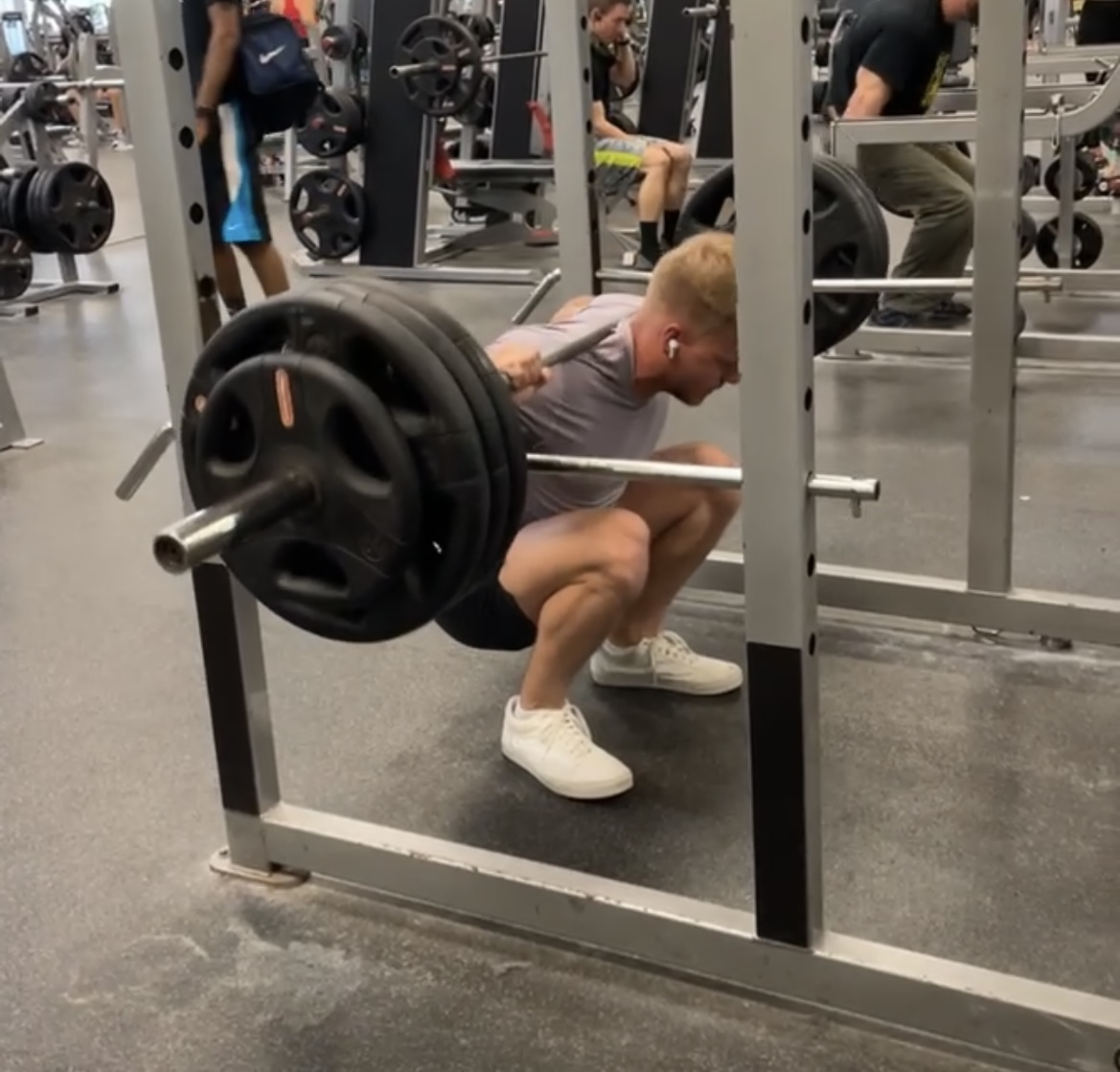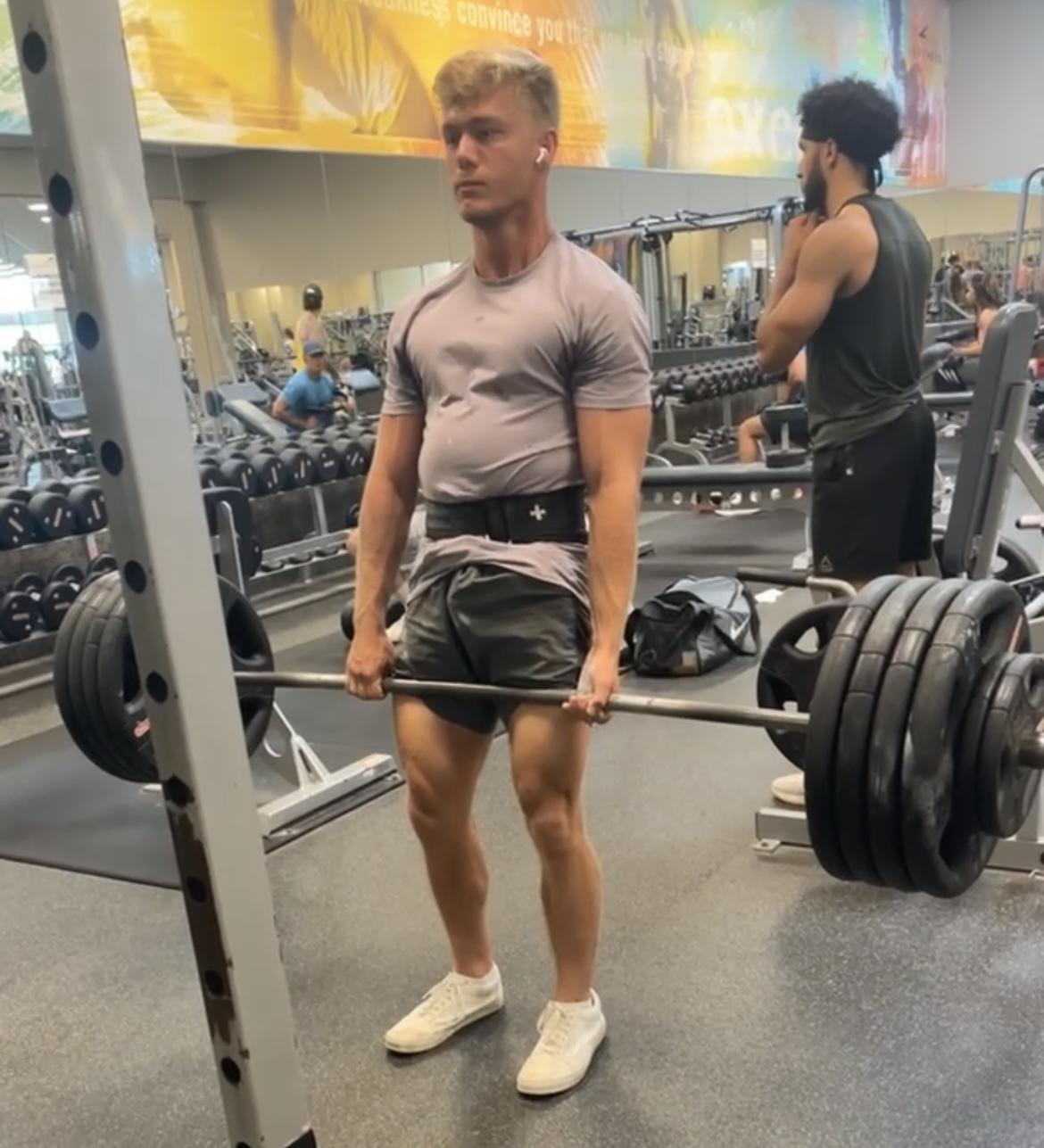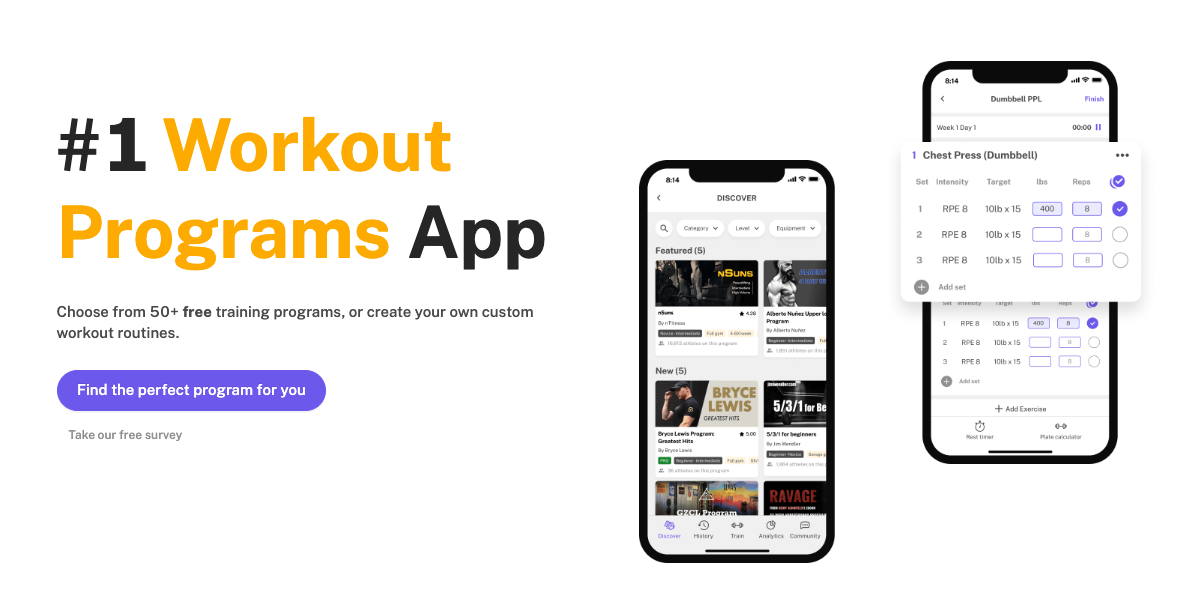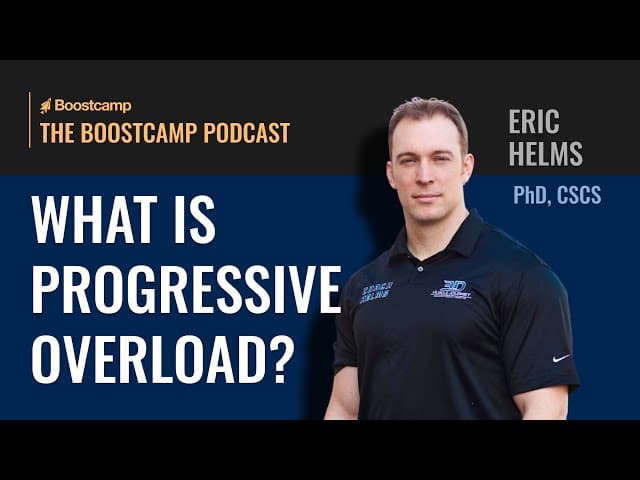How to Use Progressive Overload Properly
Written by The Boostcamp Editors
Mastering Progressive Overload: Tips for Success
Skyrocket your progress
When it comes to your training programs, sometimes you may feel as though you've gone stagnant, as if you have hit a wall in some way. Maybe you cannot get past a certain weight on your bench press when training chest, or you keep getting stuck at some point in your squats when training legs, this means you have hit a plateau, the progression has come to a halt, and your strength is stuck, this is not enjoyable. To prevent the frustration of going stagnant, you will want to utilize progressive overload during your training to push beyond those barriers and really bust through the plateaus and burnout. Incorporating variation in your workouts is also key to preventing boredom and keeping your body adapting to new stimuli, which can skyrocket your progress.
Boostcamp's very own Michael Liu was able to sit down with Dr. Eric Helms for another in-depth conversation, this time on what progressive overload is and why it is important in your training.
Let’s break it down.
What is Progressive Overload?

Pictured: Hunter Bales squatting
You more than likely have heard the term before, but progressive overload is a crucial concept that has been incorporated into training programs since the early days of bodybuilding and weightlifting, when weights were still the circus dumbbells and people had handlebar mustaches. Dr. Helms has described progressive overload in training as “the fundamental principle behind adaptation”. It is the body’s way of adapting to different loads and is especially important in resistance training. By gradually increasing the intensity of your workouts using the concept of progressive overload, you can see improvements in muscle size, strength gains, and endurance, helping you achieve your fitness goals.
For example, as you begin to lift heavier weights, your body knows that it is being pushed out of homeostasis and needs to adapt. This means bone density can increase, the size of muscle fibers will increase, there will be improvements to the neural drive, and motor patterns for the body to better understand and control how the weight is coming down on you.
Dr. Helms describes the body as “biological survival machines”, but we are not always thrown curveballs like we are in training, so using progressive overload forces the body to adapt to different situations and increase muscle size. For example, if you are increasing the number of reps per set or the total number of sets, your muscular endurance will increase as well as possibly some cardiovascular fitness benefits. On the flip side, if you are working up to a one rep max continuously and trying to increase the load each time, you may not get the same adaptations. You would get structural and neural adaptations, but not the endurance benefits. Additionally, decreasing rest time between sets can also be a form of progressive overload, as it challenges the body to adapt to shorter periods of rest and can lead to improvements in muscular endurance and cardiovascular fitness. Now the sweet spot for progressive overload is increasing load, volume, and mobility, so you get the benefits of all three.
Dr. Helms goes on to state that if you take a competitive powerlifter who squats 500 lbs, and make them squat 135 lbs one week, then 140 lbs the next, and continue to add weight, this will not have the same effects of progressive overload. They are progressing in weight, but not overloading, so they will actually be getting weaker.
He then states that progressive overload is an individualized process and if done incorrectly, you risk injury. He says that sometimes in our programs we are too eager to add weight or reps, but we should instead focus on the overload that we are providing and see if it is sustainable through proper warm-ups, adequate rest, and nutrition. It is important to remember the risks and limitations of strength training and to prioritize proper form and technique, also known as good form, to avoid the risk of injury and to ensure a full range of motion.
Is Progressive Overload Linear?
So, if you progressively overload, will the gains continue at a steady linear pace? The short answer to this is no, and Dr. Helms has the perfect scenario to describe why this is not the case. The scenario Dr. Helms uses to describe progressive overload is someone who just started lifting and they can only squat 60 lbs; he says it is not unreasonable to assume that after 12 weeks they would be able to squat 120 lbs, these are known as “newbie gains”. This is where the body is adapting to this new curveball it has been thrown. The body is finding what weights are comfortable, where the bar feels most comfortable, how deep to squat.
But the question is, will that progression continue? Can a lifter add 10 lbs to their squat each week sustainably? Dr. Helms states that progressive overload cannot be programmed to have weekly, or even monthly specific incremental increases to the bar as your lifting career goes on. Higher level lifters may take more time to add weight to their lifts. The example he used was someone who squats 500 lbs, they more than likely have a good 10 years of training under their belt, but it may take them another full year to add 15 more lbs to that one rep max.
Things That Matter With Progressive Overload

Pictured: Hunter Bales deadlifting
With all of that being said, if progressive overload is so subjective and you cannot just add 5 pounds every week, what do you do to properly incorporate progressive overload techniques? Dr. Helms states that it is not necessarily the act of putting more weight on the bar during your training block, but it is the cumulative overall stress that you are putting on and creating in that program by increasing the number of repetitions, increasing resistance, or performing the exercises more quickly for optimal muscle growth. Understanding the different progressive overload techniques, including targeting specific muscle groups and adjusting training frequency, is crucial for achieving continuous progress in your weight-training workouts.
There are a lot of different factors that can affect how you progressively overload, especially if you are a powerlifter. One thing is depth, if you squat a little deeper, is it still just as easy? You may have to practice squatting more consistently with more depth to make progression. More training techniques that can help are incorporating things like drop sets and supersets.
Another factor that can affect progressive overload is peaking for a powerlifting meet, after the meet is over and you taper down and deload a bit, dump the training fatigue and recover, where do you go from there? Will you be able to lift more at your next powerlifting meet than your previous one? This just goes to show that it is more about the overload and less about the progression.
Where to Find Workout Programs
When it comes to finding some great workout programs to help with your progressive overload, you would want to find a program that caters to your needs and guides you in the right direction, making sure that you are making the most gains. If you are looking to stay on track and continue with linear progression, then finding a good workout program is the key. Where do you look for a good workout program? Check out the Boostcamp App for some great programs.
Boostcamp is home to over 50 FREE workout programs that consist of strength, hypertrophy, or functional fitness, or both, from the push pull legs program all the way to upper lower. However, with Boostcamp, you don’t have to just follow a pre-written program, you also can create your own program as well, and track your progress to make sure you are on the right track. That being said, when you are looking to incorporate some arm training to further your powerlifting progress, then check out Boostcamp
Progressive Overload Wrap Up
The bottom line is, no one wants to hit a plateau and go stagnant in their training. There is no worse feeling than being stuck on a specific bench or deadlift max for days, weeks, or months at a time. It can be extremely mentally discouraging to someone who lifts. That is why progressive overload is so important to incorporate into your training programs, and while many think that adding a couple pounds to the bar or a couple reps to your sets is what progressive overload is, that is not the case.
Progressive overload goes much deeper than just weight and reps, it involves a lot of how you train, such as form adjustments.
That being said, will you be switching up your training any time soon? Feel free to check out the Boostcamp training programs!


